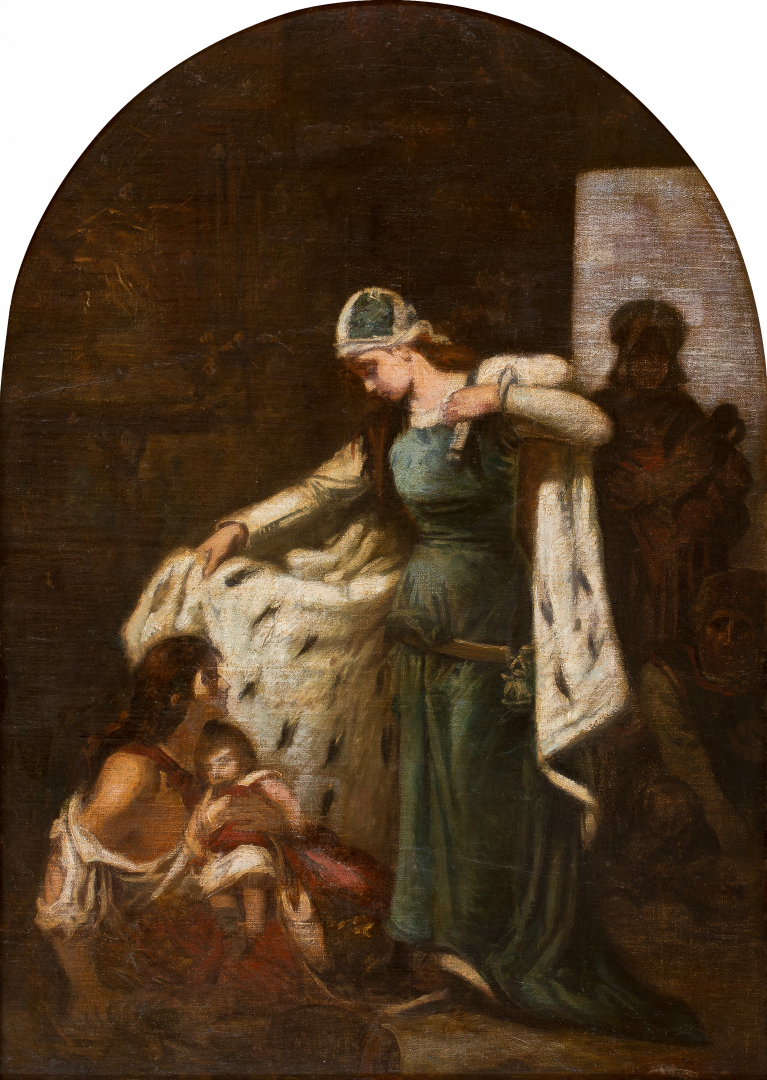Hall 1 - 5. view
St. Elisabeth of Hungary Receiving a Poor Woman into her Shelter
LIEZEN-MAYER, SÁNDOR (1839–1898)
St. Elisabeth of Hungary Receiving a Poor Woman into her Shelter, 1882–1885
oil on canvas, 100x80 cm; unmarked
Fine Arts Collection. Inv. No.: P.77.169.
Although the works of Sándor Liezen-Mayer were developed in Munich, he always remained in contact with Hungary and his oeuvre is a vital part of Hungarian historical painting. Historical themes were in demand given the zeitgeist of historicism during that era. The second half of the 19th century was characterized by a strengthening notion of national identity, which led to an increased demand for the depiction of heroes and renowned individuals whose deeds set an example for others.
The life story of the daughter of Andrew II of Hungary is part of Hungarian history as well as the international legends of church saints. This cult bolstered from two directions was first depicted in the art of Liezen-Mayer during the mid-1860s, when he chose to paint the canonization of Elisabeth as a student of the Munich Academy. He chose to revisit the story of the saint nearly twenty years later, however this time he emphasized intimacy over pathos. The genre painting composition lacks the traditional attributes associated with the saint, such as the crown. Only the ermine fur cloak, which is also the central prop of scene, hints at her royal background. Elisabeth transcends herself in this image, becoming an embodiment of mercy, empathy and sacrifice. By depicting the act of donation, the painter captures the very essence of the saint’s life and elevates it to a universal value, which is further emphasized by the semi-circular formatting evocative of altarpieces, in order to provide significance in line with the celestial sphere.
The painting, which is held in the Hungarian National Gallery, was commissioned by the National Society of Hungarian Fine Arts and made in Stuttgart. Based on the expert opinion of art historian Lajos Végvári, the painting displayed here is considered to be made by Liezen-Mayer himself, which could be interpreted either as a compositional sketch of the original, or a reduced copy of it that was painted later. It was acquired by the museum along with the rest of the art collection of Dr. Sándor Petró in 1977.
Andrea Pirint
